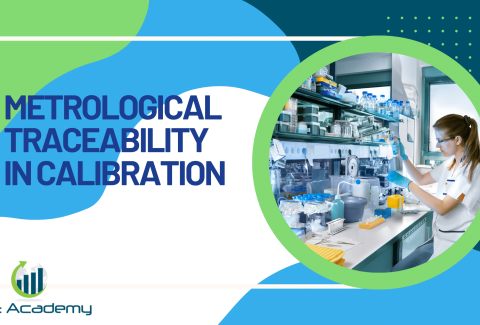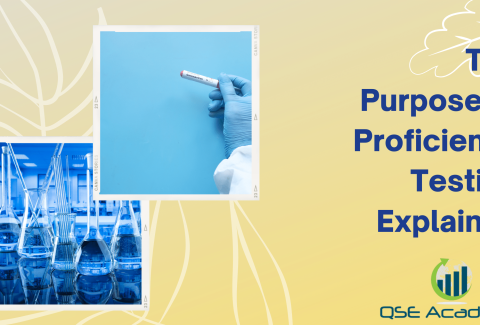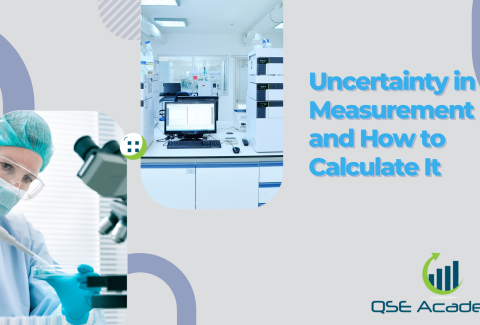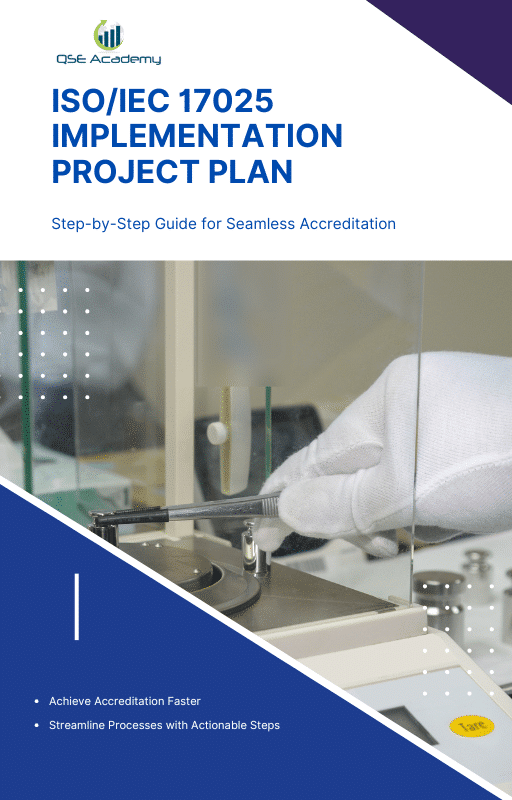10 Important Practices for Laboratories to Produce Accurate Results
Best Practices for Laboratories
Analysts, test organizations, and laboratories must know the best practices for laboratories when conducting analytical tasks in their daily operations. Missing one of those could impact the validity of a test result.
This is why QSE Academy highlights that accurate results are significant to the lives of your company, stakeholders, customers, and the public.
Not only will these steps be able to help your laboratory’s operations, but these could also be stepping stones on your way towards accreditation.
1. Formulate and Follow Simple Procedures
It is advisable to develop a comprehensive quality system. To further boost it, your laboratory can include an electronic laboratory information management system.
Hence, your laboratory must create orderly procedures in identifying, receiving, assigning, testing, disposing, and reporting samples.
For instance, you may assign an analytic team or use a unique identifier when receiving a sample. QSE Academy has helped laboratories in applying sample information such as arrival date or customer code.
For this matter, we recommend using criteria, like workload or sample type, when assigning a sample to a team or analyst. Then, move the samples to a queue zone for the analyst or team to do their task.
Here are other vital points to consider:
- Use a methodical process in the post-analysis of sample disposition.
- Put safety and environmental rules in the inventory records.
- Keep a valid chain of custody in the case of legal action.
- Preserve or return samples to the submitter in the case of legal action.
2. Sustain Proficiency
To maintain the capability in performing tasks, analysts must have the necessary education, experience, or training. Such should be attained through apprentice training or formal education.
Furthermore, analysts must take part in proficiency testing. In this way, your laboratory guarantees that analysts maintain their proficiency over time. Consequently, you can assure stakeholders and customers that your laboratory can execute test methods to produce valid results.
QSE Academy suggests further education or training expands the capabilities of analysts.
This also applies to new equipment or instruments wherein your laboratory must apply the manufacturer’s training package.
3. Select and Validate Methods
Testing and calibration laboratories must choose a test method that can produce accurate results.
Test methods may come from:
- Consortia
- Universities
- Individuals
- Organizations
- Equipment and instrument manufacturers
- Standards development organizations
Therefore, your laboratory must use method validation to defend a selected method.
For example, you can employ analysts who will perform the method using the same test object. Remember that it must have a predictable outcome or result.
To ensure successful validation, the results should be within a statistically acceptable margin of error.
If one exists, your laboratory can use a test artifact with a known result. Another option is a traceable standard reference material from the National Institute of Standards and Technology (NIST).
Once your laboratory can validate a method, you could also develop new ones.
However, research laboratories may only have a single test running, all while having a method without a history of use.
To validate, they may communicate the procedures used to develop the method. Laboratories can get this from publication to assess the method for systemic errors. Subsequently, they can use a publication to reproduce the work to get the same results.
Another complicating scenario is laboratories that have nonexistent or few validation methods. There are two options for the validation process:
- Have various analysts run the method using the same test artifact or Standard Reference Material.
- Develop appropriate control charts to track test results from one or more analysts. Use the control charts to measure the method’s accuracy, uncertainty, and reproducibility.
4. Use Traceable Standard Reference Materials
Reference material comes with validating methods. These will guarantee accurate data from analyst proficiency, individual test runs, and calibrating instruments.
The NIST Standard Reference Materials is considered as the pinnacle. NIST has more than 1,000 SRMs that can cover diverse technologies. In effect, results that have NIST-traceable SRMs are generally recognized as valid.
Note that an SRM must be appropriate in an analytical chemical laboratory for quantitative analysis. This also applies to a series of reference materials with known elemental contents.
However, NIST SRMs don’t encompass all laboratory analysis needs. For this situation, it is better to use standards from other entities or organizations.
5. Replicate Testing
Duplicate or triplicate testing to add confidence in the test run. Replicated data doesn’t prove data validity. Yet, it is a good measure of method reproducibility.
If the replicated data is not in agreement, there could be one or more invalid data points. When this happens, QSE Academy recommends retesting the object or reviewing the procedure.
On the other hand, you can assure confidence if the same test run comes with reference material.
6. Preserve Original Test Data
Recorded data is an integral part of the documentation. Keep records of data coming from:
- Scrap papers
- Notebooks
- Databases
- Electrical or digital forms
- Automated analyzers
- Spreadsheets
- Handwritten documents
- USB flash drive or CD
- Other similar media or platform
In the case of outdated media, laboratories must address how long they can maintain data. Laboratories must also be able to transfer files to new media.
7. Assign Equipment and Instruments to Analysts
There are temperamental and sophisticated instruments that should be assigned to analysts.
Assigning equipment to a single analyst minimizes calibration, maintenance, and usage time. However, that staff member must keep the equipment operational, and alert the laboratory for malfunctions.
In the case of many analysts using a single instrument, a primary user will:
- schedule time usage;
- handle calibration and maintenance;
- ensure control charts;
- notify the team about problems;
- determine with laboratory management if there are funds for repair;
- monitor repair.
8. Perform Instrument Calibration
Laboratories must calibrate to confirm that an instrument can function properly. Use a sophisticated analyzer or a simple balance for this process.
Accredited laboratories require periodic instrument calibration from certified outside organizations.
In most cases, an incorrect result with an SRM equates to a problem with an instrument. Oftentimes, analysts can spot problems by listening to the instrument.
Resetting the electronic system of an instrument is a common and simple recalibration.
If the problem is worse, the assigned analyst can solve the situation with the help of an instrument technician or a professional calibration service.
9. Optimize Control Charts
A control chart monitors the results of a control sample and/or reference material. Likewise, it can avoid uncertain results from reaching customers.
Thus, you get immediate, measurable, and visual indications. In short, your laboratory can see the test run quality of results.
You can use control charts to check the performance of your laboratory, analysts, staff members, instruments, or variables.
A Shewhart control chart plots individual test results for a control sample or reference material. Note that control limits can be set on a case-by-case basis.
If the results are within the control limits, your laboratory can resume normal operations. But if the control sample leads to results outside the control limits, your laboratory can repeat the test to ensure accuracy.
10. Keep Good Records and Documentation
Documentation is proof that your laboratory followed the best practices. Similarly, it guarantees customers, government authorities, and auditors that your laboratory has proper procedures.
Hence, analysts must create documentation for every aspect of their tasks.
Moreover, you can use these documents to train new members or readily provide customers with copies of their results. In the case of legal actions, you can use the documentation to defend test procedures and results.
Finally, if your laboratory is aiming for accreditation, you can easily gather files regarding proficiency testing, method validation, and instrument calibration.
Remember that each practice needs proper documentation. To help your company become reliable, QSE Academy suggests applying these practices to your routine procedures.
We also have toolkits you can optimize when performing the 10 best practices of laboratories.
Looking for More Resources on ISO 17025?
If you found this article helpful, explore our premium resources designed to help you achieve ISO 17025 certification efficiently:
- 📦 Complete Documentation Package for ISO/IEC 17025 2017: Get all the essential templates and documents you need for fast, easy implementation.
- 🎓 Online Course on ISO/IEC 17025 2017 : Enroll in our comprehensive training to master the key concepts and practical steps toward certification.
- 📋 ISO/IEC 17025 2017 Checklist: Download our detailed checklist to ensure you’ve covered every step of the process.
These resources are tailored to meet your needs and ensure a smooth certification journey. Explore them today and get one step closer to success!


















